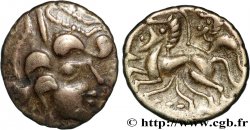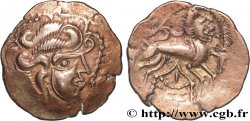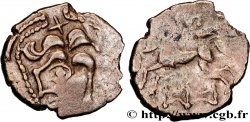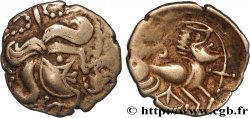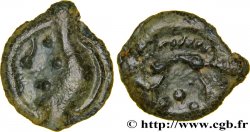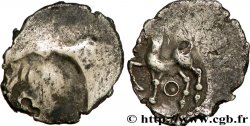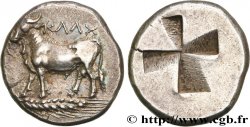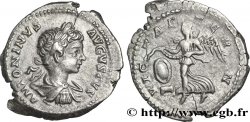Live auction - bga_507497 - GALLIA - ARMORICA - OSISMII (REgione di Carhaix - Finistère) Statère composite en bas électrum, à la chevelure rayonnante, DT. 3625
Devi Sign-in ed essere un offerente approvato fare un'offerta, Login per fare offerte. Conti sono soggetti ad approvazione e di approvazione sono raggiunti entro 48 ore. Non aspettare fino al giorno di una vendita si chiude per registrarti.Confermando la tua offerta su questo oggetto ti impegni ad un contratto legalmente vincolante per l'acquisto di questo prodotto e fare clic su «offerta» costituisce accettazione dei termini di utilizzo de live auctions cgb.fr.
Offerta deve essere collocato in euro gli importi interi vendita only.The si chiuderà al momento sulla descrizione dell'oggetto, eventuali offerte pervenute al sito dopo l'orario di chiusura non verranno eseguite. Volte transmition possono variare e le offerte potrebbero essere respinto se si attende per gli ultimi secondi. Per ulteriori informazioni ckeck le FAQ Live auction.
Le offerte vincenti saranno sottomesse ai 18% per spese di compartecipazione alla vendita.
Le offerte vincenti saranno sottomesse ai 18% per spese di compartecipazione alla vendita.
| Valutazione : | 6 000 € |
| Prezzo : | 3 800 € |
| Offerta maxima : | 3 800 € |
| Data di fine vendita : | 04 dicembre 2018 15:08:30 |
| partecipanti : | 1 partecipanto |
Tipo : Statère composite en bas électrum, à la chevelure rayonnante, DT. 3625
Data: c. 80-50 AC.
Nome della officina / città: Brest (29)
Metallo : elettro
Diametro : 19,5 mm
Asse di coniazione : 9 h.
Peso : 7,13 g.
Grado di rarità : R3
Commenti sullo stato di conservazione:
Exemplaire dans un état de conservation remarquable pour le type ! Monnaie complète des deux cotés. Joli droit. La monnaie a été nettoyée anciennement
Diritto
Titolatura diritto : ANÉPIGRAPHE.
Descrittivo diritto : Tête à droite, la chevelure rayonnante.
Rovescio
Titolatura rovescio : ANÉPIGRAPHE.
Descrittivo rovescio : Cheval galopant à droite avec un triangle au-dessus de la croupe ; un buste humain droite, entre les jambes du cheval.
Commento
L’attribution du bga_228343 (classé Namnète en accord avec le Nouvel Atlas) nous semble désormais à revoir en faveur des Osismes.
Cette série est bien connue, mais ses spécimens semblent peu nombreux ! Dès 1873, E. Hucher publie le dessin d’un statère de cette série (Tome I, fig. n° 87) qui serait celui du MAN. Bien que l’iconographie s’en distingue nettement, il était alors associé aux monnayages pictons et santons, probablement en rapport avec la facture et le type de métal utilisé. L’exemplaire de la BN est indiqué comme provenant de la Loire à Angers (Maine-et-Loire).
Bien que très rare, on peut remarquer que le petit buste humain à droite entre les jambes du cheval (probablement une dégénérescence de l’hippophore) est une constante alors que le triangle au-dessus de la croupe du cheval n’est pas systématique et il en va de même pour la rouelle devant le poitrail
Toutes variantes confondues, ce statère serait le cinquième exemplaire publié, après celui de la BN qui illustre le Nouvel Atlas (DT. 3625), l’exemplaire du MAN, décrit comme “inaccessible”, le bga_228343 (qui, bien que dans un piètre état, a le mérite d’exister) et enfin le bga_325312, jusqu’ici considéré comme le plus bel exemplaire !
.
The attribution of bga_228343 (classified as Namnete in accordance with the New Atlas) now seems to us to be reviewed in favor of Osisms.
This series is well known, but its specimens seem few in number! As early as 1873, E. Hucher published the drawing of a stater from this series (Volume I, fig. No. 87) which would be that of the MAN. Although the iconography is clearly different, it was then associated with Picton and santon coinage, probably in relation to the manufacture and the type of metal used.. The BN example is indicated as coming from the Loire in Angers (Maine-et-Loire).
Although very rare, we can notice that the small human bust on the right between the horse's legs (probably a degeneration of the hippophore) is a constant while the triangle above the horse's rump is not systematic and the same goes for the wheel in front of the chest. All variants combined, this stater would be the fifth published example, after that of the BN which illustrates the New Atlas (DT. 3625), the MAN example, described as “inaccessible”, bga_228343 (which, although in a poor state, has the merit of existing) and finally bga_325312, until now considered the most beautiful example!
Cette série est bien connue, mais ses spécimens semblent peu nombreux ! Dès 1873, E. Hucher publie le dessin d’un statère de cette série (Tome I, fig. n° 87) qui serait celui du MAN. Bien que l’iconographie s’en distingue nettement, il était alors associé aux monnayages pictons et santons, probablement en rapport avec la facture et le type de métal utilisé. L’exemplaire de la BN est indiqué comme provenant de la Loire à Angers (Maine-et-Loire).
Bien que très rare, on peut remarquer que le petit buste humain à droite entre les jambes du cheval (probablement une dégénérescence de l’hippophore) est une constante alors que le triangle au-dessus de la croupe du cheval n’est pas systématique et il en va de même pour la rouelle devant le poitrail
Toutes variantes confondues, ce statère serait le cinquième exemplaire publié, après celui de la BN qui illustre le Nouvel Atlas (DT. 3625), l’exemplaire du MAN, décrit comme “inaccessible”, le bga_228343 (qui, bien que dans un piètre état, a le mérite d’exister) et enfin le bga_325312, jusqu’ici considéré comme le plus bel exemplaire !
.
The attribution of bga_228343 (classified as Namnete in accordance with the New Atlas) now seems to us to be reviewed in favor of Osisms.
This series is well known, but its specimens seem few in number! As early as 1873, E. Hucher published the drawing of a stater from this series (Volume I, fig. No. 87) which would be that of the MAN. Although the iconography is clearly different, it was then associated with Picton and santon coinage, probably in relation to the manufacture and the type of metal used.. The BN example is indicated as coming from the Loire in Angers (Maine-et-Loire).
Although very rare, we can notice that the small human bust on the right between the horse's legs (probably a degeneration of the hippophore) is a constant while the triangle above the horse's rump is not systematic and the same goes for the wheel in front of the chest. All variants combined, this stater would be the fifth published example, after that of the BN which illustrates the New Atlas (DT. 3625), the MAN example, described as “inaccessible”, bga_228343 (which, although in a poor state, has the merit of existing) and finally bga_325312, until now considered the most beautiful example!







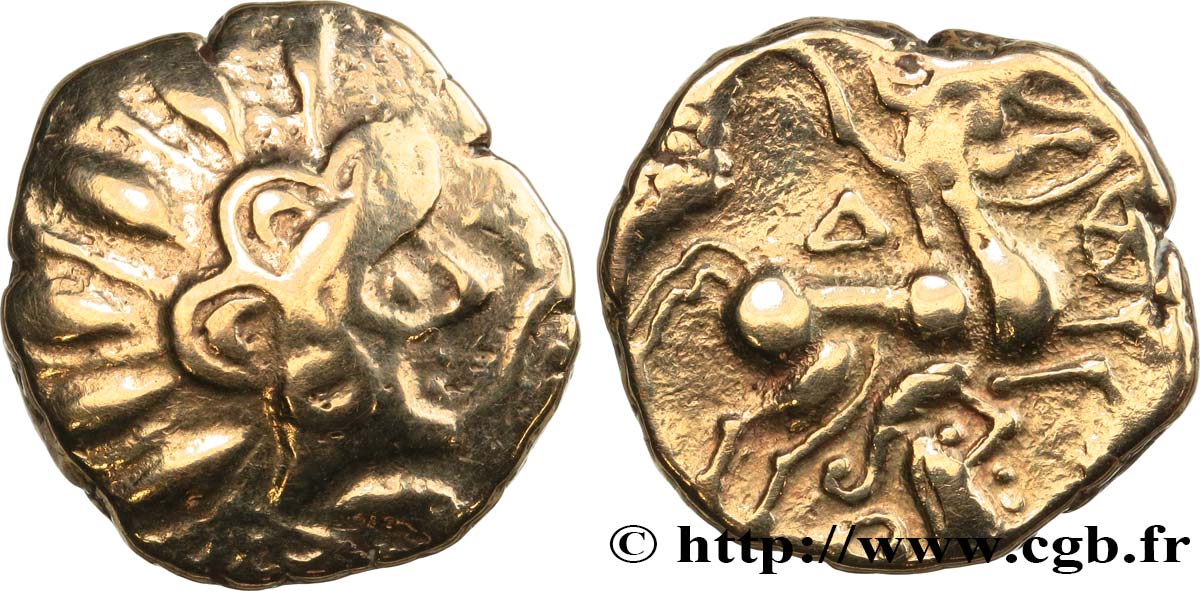
 Segnalare un errore
Segnalare un errore Stampate la pagina
Stampate la pagina Condividi mia selezione
Condividi mia selezione Fai una domanda
Fai una domanda Consegnare / vendere
Consegnare / vendere
 Descrittivo
Descrittivo
